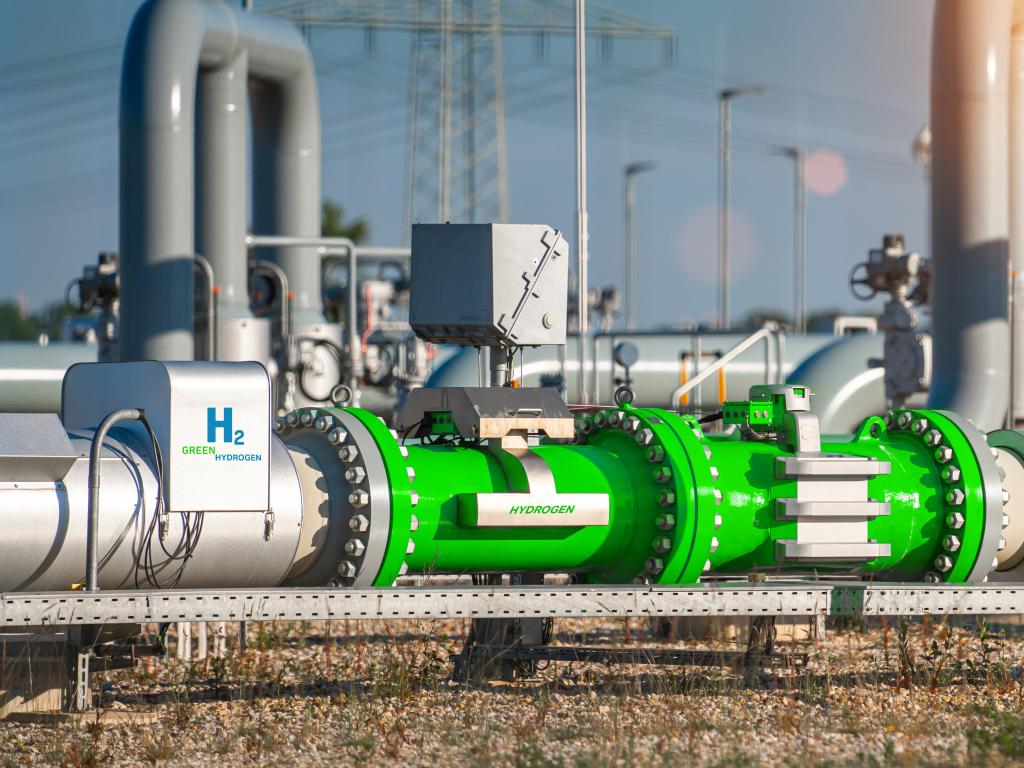Researchers explore strategies to ‘de-risk’ green hydrogen investment in the Global South

Photo: Adobe Stock
With the growing global interest in green hydrogen as a potential energy source to offset climate change, international projects are studying the sector. EPRU researcher Anthony Black and university associates Glenn Robbins, and Sören Scholvin have worked on an international project based at UNU-MERIT in the Netherlands, which involves researchers in Brazil, Chile, China, and South Africa. As part of the UNU-MERIT project, a working paper was developed that examines green hydrogen strategies in the participating countries.
Anthony Black’s research focuses on Chile and South Africa. Green hydrogen is a large investment, both from the public and private sectors. Industry-specific uncertainties or challenges create an even greater hurdle to the success of the sector. De-risking the investments is necessary for green hydrogen development in developing countries.
When examining the de-risking of green hydrogen, two key types of concern are raised. The first is the potential debt traps for developing economies. The second is the broader political and economic drawbacks. There is research that shows green hydrogen projects reinforce the privatisation of communal land, which leads to the displacement of communities, or the reduction in available land. Furthermore, the environmental and social costs of energy transitions are often shifted into the periphery, with profits and resources transferred to the core, which could lead to negative economic outcomes.
Low-cost de-risking options
The researchers found that different solutions of de-risking come with varying costs. A low-cost method of de-risking investments is through fora, that facilitate discussions between private and public decision makers. These fora help reduce inefficiencies in policy and aid in the alignment of the public and private sectors. Both Chile and South Africa involve the private sector in decision-making and discussions. Chile has the Strategic Committee on Green Hydrogen, and South Africa has a Green Hydrogen Advisory Board with private sector participation, as well as a green hydrogen secretariat that serves as a point of contact for private sector stakeholders.
Effective strategy and research can further de-risk green hydrogen. Establishing development programs that seek to improve local skills at universities or vocational centres and supporting local suppliers is key. Given the high costs of investing in green hydrogen, it is important to focus on more than just the industry itself, as significant growth can also occur in related sectors that supply or depend on the green hydrogen industry. Chile has focused on the development of its local suppliers and has launched initiatives to attract foreign manufacturers of inputs. In contrast, South Africa lacks clear objectives or plans for local supplier development, or incentives for foreign manufacturers.
Infrastructure subsidy – expensive but a one-time cost
A high-cost method of de-risking green hydrogen investment is to subsidize infrastructure. This creates a significant cost to government but does improve the investment landscape for green hydrogen and lowers the barriers to entry. The infrastructure will not be relevant to other sectors, due to the specialised nature of green hydrogen production, which creates a significant risk for governments. If the industry is to fail, the infrastructure can’t be used for other purposes. An advantage of infrastructure subsidies is that they are one-time investments, as opposed to a strategy like state-based minimum price guarantees, which would require a continuous cost to government.
Developing countries should seek external funding
One major threat to developing countries’ green hydrogen investments is the extensive funding that is required. To protect developing countries from financial drawbacks, it is recommended to avoid domestic private funding. Furthermore, developing countries should not have an obligation to repay international funding if the project fails. Otherwise, the debt burden placed on developing countries would be severe, and a failure in a green hydrogen megaproject would be catastrophic. Both Chile and South Africa have developed funding schemes which involve some limitation of debt repayment. For South Africa, from a USD 8.5 billion funding package, 81% of it consists of loans, which creates concern about the debt burden. Chile has been able to have its investors share the liability on their USD 12.5 billion funding package.
Global collaboration is key to de-risking green hydrogen
For developing countries to implement green hydrogen mega projects, the Global North must assume a higher share of risk. De-risking these investments is an international task, and a successful example is the German-Namibian green hydrogen partnership. It is important for developing countries to also take agency in the development of effective policies and planning, to increase the likelihood of success. Policy makers are key in the success of green hydrogen megaprojects, and de-risking policies are an important part of that process.
To read the full publication by Black, Robbins and Scholvin, please click here
To read the UNU-MERIT working paper, please click here